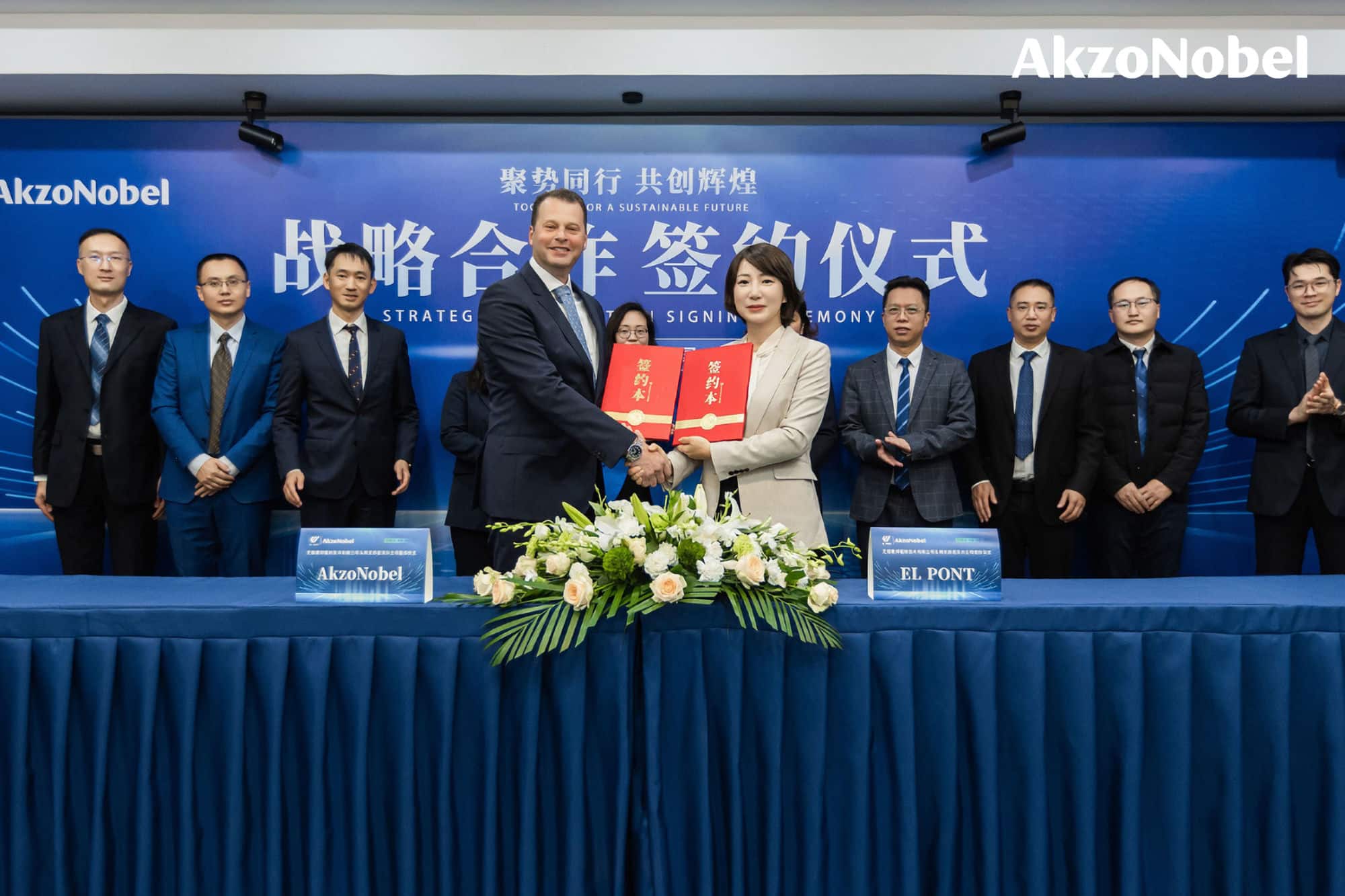AkzoNobel looks to alternative coatings cure
Electron beams are being explored as a potential alternative for curing coatings via a new partnership between AkzoNobel and China’s Wuxi El Pont Radiation Technology Co, Ltd.
AkzoNobel’s Coil and Extrusion Coatings business has signed a strategic agreement with the hi-tech specialists to develop a pioneering process that uses electron beams to cure coatings on metal substrates.
Dr. Kaj van Alem, Commercial Director of AkzoNobel Industrial Coatings in Asia (left), and Dr. Yuwei Zhang, General Manager of El Pont (right), pictured together with colleagues at the official signing of the strategic partnership agreement in the city of Wuxi, China.
E-beam technology is a fast-growing scientific field and could offer significant advantages over conventional thermal curing methods, such as lower energy consumption, increased productivity with higher quality and reduced environmental impact. The process itself cures coatings by using a directed stream of electrons to deliver the energy required to form the final film.
“We’re extremely excited about the possibilities of E-beam technology and the benefits this partnership could bring,” says Jim Kavanagh, Director of AkzoNobel’s Industrial Coatings business. “By working together with Wuxi El Pont, we’ll be able to leverage their expertise and experience of electron accelerators and beam devices and innovate sustainable solutions together.”
Adds Dr. Yuwei Zhang, Chairman of Wuxi El Pont Radiation Technology Co., Ltd: “We’re committed to developing China’s civil nuclear technology and expanding the application of electron beam technology. We have every confidence that the combination of our process development capabilities for low-energy electron beam equipment with AkzoNobel’s research and development expertise will prove to be a success. Our close cooperation will accelerate the low carbon transformation of the paints and coatings industry, improve product quality and safety, and provide strong support for the industry to make strides towards carbon neutrality as soon as possible.”
Wuxi El Pont is a leading player in the high energy radiation accelerator market. The company has a strong presence in China and offers advanced solutions for radiation sterilization and material processing applications. The E-beam technology it uses is electrically generated and does not rely on radioisotopes, which means no radioactive waste or toxic compounds are involved.
Continues Kavanagh: “As a company, we’re fully focused on innovating with, and for, customers, and continue to play a progressive role in energizing entire industries to advance towards a more sustainable future. We’re therefore looking forward to a long and fruitful partnership, which could potentially help to advance innovation and sustainability throughout the coatings sector.”
The agreement was signed at a ceremony held in Wuxi, China, which was attended by representatives from both companies, as well as local government officials.


